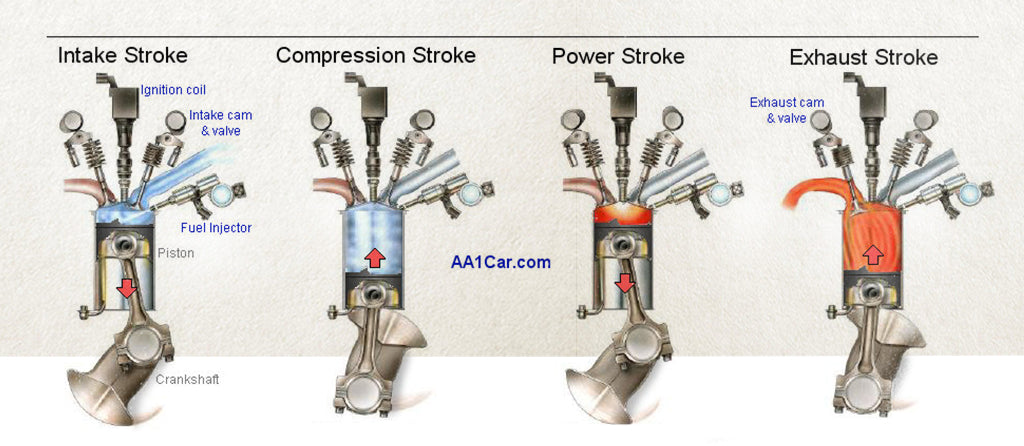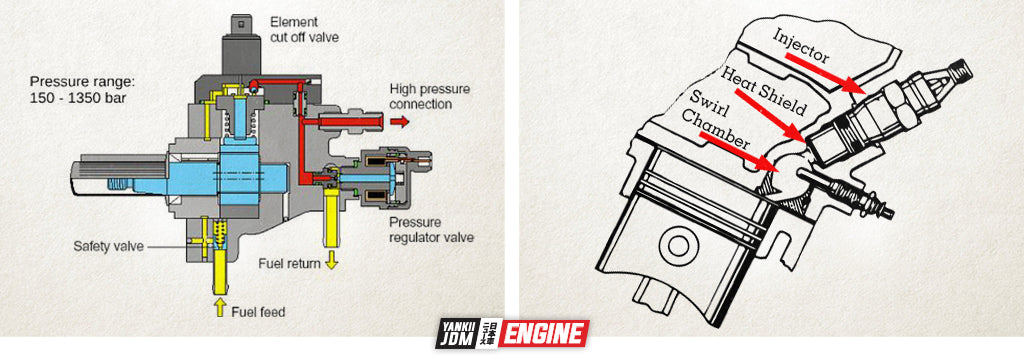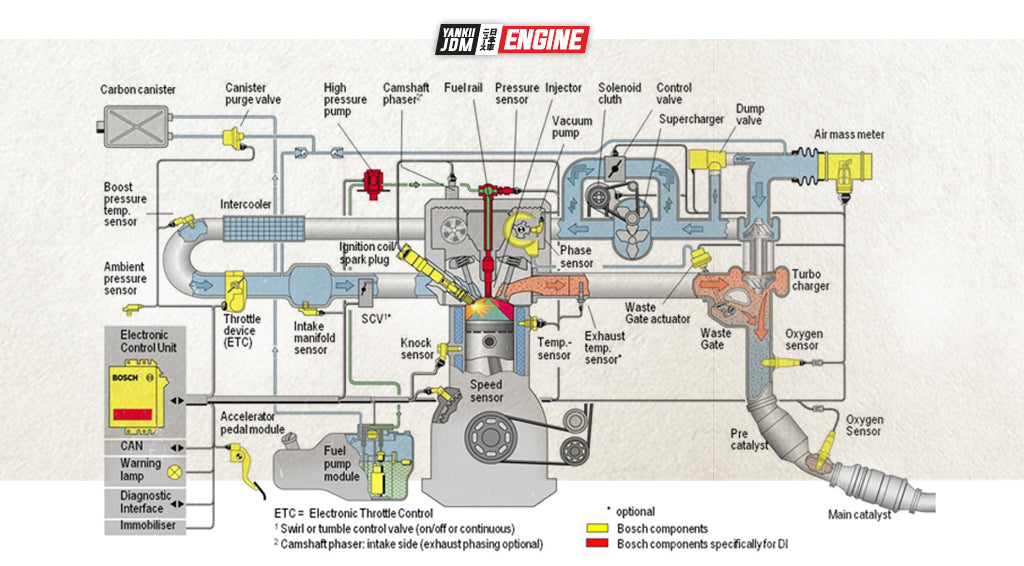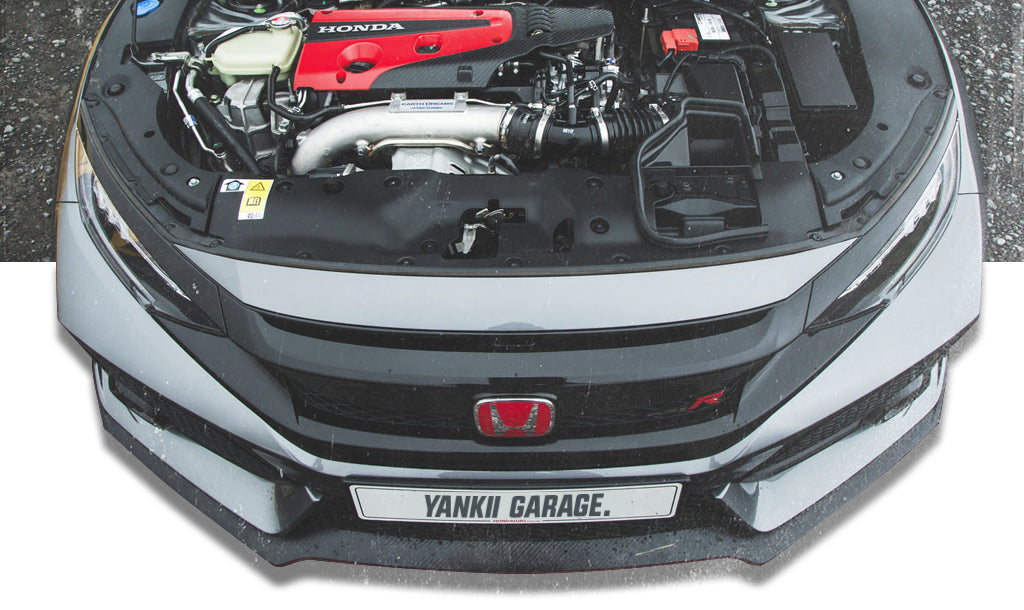What are the benefits of direct injection?
Why do many Japanese manufacturers use direct injection, especially in combination with turbocharging and intelligent camshaft management?
In this Yankii JDM Engine article, we will explain everything about the direct injection technology, which has been very popular in the last few years. Here we go.

Direct fuel injection is one of them, as are all the different thermodynamic cycles, supercharging, 4-wheel steering as Honda was already doing in the 80s, etc.
Direct injection comes to life in the middle of the airplane at the end of the 19th century and continues its development with Mr. Levasseur and his V8 engines. The Swedish engineer Hesselman even exploited this technique with a bi-fuel concept petrol/gasoil or kerosene. Just before the Second World War refocused innovation on military applications, Bosch had also started working on these systems. From the 1950s onwards, the automotive world saw the introduction of the forerunner of what is now called GDI (direct injection gasoline) through 2-stroke engines in Goliath and Gutbrod vehicles. The best known of the first direct injection systems remains the Mercedes Benz 300SL which was equipped with a Bosch mechanical system. It was the first series production sports car to be equipped with the direct injection system.
The Americans then worked seriously on the direct injection system by developing new associated combustion modes. The 80s remained rather empty on this subject until Mitsubishi came out with its own engine, the 1.8L 4G93 GDI marketed mainly in the Carisma, then its first 6-cylinder 3.5L 6G74 at the end of the 90s. Between us, this is clearly the Japanese competitive response to the arrival of direct-injection diesel engines in Europe.
OEMs around the world have thus developed a great deal of creative activity around the complete high-pressure fuel system. Nissan also followed the trend with its VQ30DD, then Toyota in 1998 with several families of engines equipped with the D4 system, such as the 1AZ-FSE, or the better known 3GR-FSE for the Lexus GS300, or 2GR-FSE for the GS 350.
Europeans waited until the 2000s to enter the IDE (injection direct essence) market, initiated by Renault, then VW and Alfa Romeo, before being caught up technologically by all the other manufacturers. In recent years, even the Supercar and Hypercar have also been getting into it! It seems that the future is clearly heading in the direction of direct injection, as the Honda Civic Type R, for example, has shown us.
 Direct injection vs Port injection
Direct injection vs Port injection

The most common spark ignition engines today use the low-pressure fuel system (fuel pressure less than 5 bar) with an injector mounted in the intake pipe opposite the valves.

This system, even if it has made the glory of the most famous engines, has some disadvantages such as the obstruction of the passage of air to the cylinder, the wetting of the walls with the difficulties of managing the injected mass cycle to cycle (memory effect) the stability of combustion at low loads where our engines consume the most in relation to the work produced, cold boosting to combat condensation, the need to regulate injection pressure according to intake pressure (with injection at 3 bars and just as much boost pressure, little fuel would come out of the injector. ...). The direct injection system is much more flexible in terms of tuning and precision in fuel management, and therefore provides many possibilities to improve engine performance.
 Direct fuel injection, fuel inside the cylinder
Direct fuel injection, fuel inside the cylinder

- By a low-pressure pumping unit
- Then by the high-pressure pump that brings the fuel to pressures 20 to 100 times higher than those encountered in indirect injection.
 Direct injection engine, Gas mileage
Direct injection engine, Gas mileage

This method of creating the mixture is not as easy as when fuel is injected just before the intake valves because the turbulence created near the valve favors the oxygen/fuel mixture. The permissible injection time is also shortened because of the location of the injector in the chamber. The exhaust cycle prior to intake takes place with the associated valves open. In order not to see the gasoline leaving the exhaust and burn off the poor turbine in its path, injection can only begin when the exhaust valves are closed.
If the engine benefits from a strategy of circulating fresh air through the cylinder to the exhaust, to reduce the response time of the turbocharger thanks to the crossing of the valves. To counter this problem and deliver the right amount of fuel, the injectors increase their flow rate and especially their supply pressure (generally 60 to 120 bar standard, up to 250 bar on sports engines and 500 bar in motorsports, limited by regulations).
The increase in pressure has a double effect:
- Make the injected quantity little sensitive to the surrounding pressure at the nose of the injector.
- Facilitate the atomization of droplets within the oxidizer admitted into the combustion chamber.
Having a homogeneous mixture allows to produce more power because all the air admitted in the cylinder is theoretically exploited to burn the fuel. However, having a homogeneous mixture implies a flame near the walls of the chamber. That is to say, to transmit some of the heat to the surrounding metal when it is supposed to push the piston towards the bottom dead center and thus produce torque. It should also be noted that the mixture that has landed in isolated corners of the chamber will be too cold to burn and therefore will be spoiled!
So what's the point of putting in all the potentially admissible fuel if it's not to produce horses? What if we could put the mixture close to the candle, as well as in the center of the chamber while protecting the gasoline from the cold and the walls that steal calories from it? More below guys!
 Fuel injection performance, What is fuel Stratified Combustion
Fuel injection performance, What is fuel Stratified Combustion

Since the fuel only ignites when mixed with oxidant, and only within a narrow metering window and in the presence of a spark from the spark plug: direct injection also offers the possibility of aiming for the correct metering at the spark plug electrodes and having an overall richness in the chamber well below the stoichiometry.
This is the stratified combustion mode:
Several types of stratification coexist, the main ones being linked to the engine architecture and therefore easily recognizable. The basic concept of stratification concerns the reduction of consumption when it is not necessary and particularly in partial load. The idea is to eliminate the pumping work of the engine when the throttle valve is partially or completely closed. Thus the engine admits the amount of air it has almost without restriction, while fuel is introduced in the proportion sufficient to produce the desired torque. The stratification of the mixture makes it possible to position the metering at the level of the spark plug, which will become poorer as it moves away from the spark plug. This allows to create a combustion without instabilities and misfires as it would be the case in poor indirect injection (therefore necessarily homogeneous).
The cooling effect of the charge by the excess air and by the vaporization of the fuel also limits the engine's sensitivity to knocking. The increase in the engine's volumetric ratio made accessible by this new feature increases efficiency and power.
(indirect injection engines are generally 10.5 : 1 compared with 12.5 for non-supercharged direct injection).

This mixture guidance can be achieved in several ways.
- The first engines with direct injection systems used wall assisted injection. That is to say, the piston head has a shape that brings the air and the fuel injected laterally towards the spark plug in a rotational movement whose center is horizontal with respect to the cylinder axis (aero movement also called tumble). Considering the extremely short time left for the formation of the mixture, the injection pressure must be very high. At low loads with small amounts of gasoline, it is difficult to reach the spark plug, which still requires to valve the intake through the throttle valve in order to reduce the air density that will have to be overcome to reach the spark plug. At high loads, the short time requires large injected flows, and therefore a consequent pressure, which creates rich zones that burn badly and form particles. This particle formation is also caused by wetting of the piston wall (condensation of gasoline).
Beyond pollution, this fuel will not be completely oxidized and will not produce the desired power. A variation of this process is air-assisted injection, which consists of directing the air ducts so as to have an aerodynamic cushion between the piston and the droplets to avoid the interaction and therefore the condensation. Because aerodynamic effects are difficult to control at any point in engine operation, these two stratification processes are usually combined at different engine operating times.
- Newer versions of the IDE system use jet-assisted injection with an injector positioned in the center of the combustion chamber, right next to the spark plug. The injector discharges the atomized fuel vertically downwards at higher pressures than the previous two cases. With the spark plug close by, the mixture preparation time is shortened as much as possible avoiding the problems of other techniques. Thus, a fairly high stratification rate can be achieved without combustion misfiring over a wide range of rpm and load. Since it does not require special aerodynamics, the piston can maintain a more conventional shape and reduce the architectural compromise between full-load performance and partial loads. However, it does put stress on the ignition system and the thermomechanical performance of the injector. The slightest fouling results in smoke and misfiring, not to mention the spark plugs. drowned.
Other types of intermediate or dedicated stratifications show all the flexibility of the GDI system, such as for accelerated engine heating or faster catalyst activation.
 Direct fuel injection, engine structural change
Direct fuel injection, engine structural change
 The cylinder head and piston are the elements most affected by the transition from indirect to direct injection.
The cylinder head and piston are the elements most affected by the transition from indirect to direct injection.
We have already mentioned the shape of the piston head which is specific to guide the air and fuel in an aerodynamic movement (tumble and more rarely swirt rotation around the cylinder axis) favoring the oxidation of gasoline and the correct placement of the mixture at the time of ignition. It can gain some weight and becomes difficult to replace with any version of forged piston. The cylinder head changes even more because it must receive a new element, but especially because the intake ports become key parts of the engine's proper operation. The duct conditions the combustion efficiency (minimizes unburned parts) and thermodynamics (less heat exchange with the walls), the filling (capacity to admit air into the chamber) and the thermomechanical strength of the cylinder head. Modifying the duct slightly will therefore degrade performance. It is interesting to know that, for example, a central injector requires fairly straight ducts with a shape conducive to good filling. In addition, only the air passes through intake valves and the fuel volume leaves room for more air... This allows a direct injection engine to admit 5 to 10% more air at the same conditions compared to indirect injection. We like it!
The more the ducts give a fast and turbulent air flow, the better the homogenization of the mixture but also the faster the combustion because the flame is "carried by the speed of this movement". A faster combustion allows to advance the ignition and in parallel to burn everything before the knocking appears. Nice... but at the price of a few percent less filling.
We can also imagine a lateral positioning of the injector on the exhaust side to take advantage of the heat of the parts and facilitate the vaporization of the fuel in the air, reduce the need of the aero and make the ducts more permeable. Similarly, as mentioned, the fuel evaporating in the cylinder cools the mixture and the parts, which reduces sensitivity to knocking and gives access to volumetric ratios up to 2 points higher than indirect injection. That's why Mazda can go for a ratio around 14 and others have 1.6L supercharged engines at 300 horsepower with ratios close to 10. Performance gives access to power levels hitherto reserved for the elite of motorsport.
 Gasoline Direct Injection, common rail
Gasoline Direct Injection, common rail

The main purpose of the direct injection fuel system is to provide fuel at high pressure regardless of the flow demand. Structurally, it is arranged in two parts: high (HP) and low pressure (LP). The LP system consists of the fuel tank, charge pump, filter and the supply tube to the HP system.
This is different from what is known about indirect injection engines. It consists of the HP pump, usually driven by the camshaft, the HP hoses, the rail, the pressure regulator, the pilot operated return valve and the injectors. If the LP system is similar to the indirect injection system, the mechanical HP pump compresses the fuel and sends it under pressure to the rail. This pressure is regulated by the sensor and the valve allowing a more or less high leakage. The pression reserve is located in the rail. Its function is to store the volume of fuel sufficient to avoid disturbances by pressure waves from the pump and the operation of the injectors. The HP pump is a mechanical machine, generally with 3 pistons arranged at 120° and controlled by a shaft with a triangular profile. The shaft is driven in rotation by a power take-off on the camshaft.
The injection flow rate and time are independent of the engine speed (or almost) because they are controlled by the ECU. The three pistons of the pump each have an intake and an exhaust. In operation they can manage pressures ranging from 20 to 200 bars and more. The injector is the key element of the system. It must create a particular jet depending on the shape of the delivered flow, the penetration angle of the jet (30 to 80 with a penetration depending on the cylinder pressure) and the atomization of the fluid (-15 micrometers per droplet and less). This is repeatable regardless of thermal or vibration conditions. In addition, as he sees the flame, impurities, rattling.
Fouling and thermomechanical resistance are subjects that are closely studied and monitored. Given the precision required in the creation of the jet, gasoline injectors for direct injection are indexed in relation to the cylinder head. Different types of injectors exist
and we will quote the main architectures:
- Very popular, the swirl injector - has a chamber giving a rotational movement to the fluid whose main axis goes in the axis of the barrel (cylinder). Its needle is incoming, attracted by the winding fed by a current. The web, in addition to having a rotational movement, is conical and hollow.
- The multi-hole injector is inspired by diesel technology, but long time exploited in a way not very favorable to gasoline combustion. It has evolved well since then and has an advantage in its ability to exploit high fuel pressure.
- The piezo-controlled valve injector has a needle whose head remains outside the injector nose. This technology is very robust against fouling and has an excellent seal. Its control, which is quite flexible in terms of needle lift, allows it to modulate the shape of its flow rate and ensure optimum spraying in relation to the available pressure. This can be very high because the needle's sealing and rebound are architecturally suitable for such operating conditions.
The choice of the injector technology to be installed on the engine will depend on the position of the intake and exhaust ducts, the compromise with the size and height of the engine (to be installed in a range of vehicles) as well as the economical nature of the engine or the search for power at all costs (increasingly rare in motorsport where performance is obtained through efficiency).
 Direct injection turbocharged engine
Direct injection turbocharged engine

The DI is individually an interesting technology because it gives access to combustion cycles that were previously difficult to achieve. Among these, the Miller cycle with an early closing of the intake valve to take advantage of piston expansion (opening on 50 crankshafts), to cool the mixture and above all to reduce the engine's pumping work. The Atkinson cycle does the same thing but by closing the intake valves when the piston rises (240 and more opening). Interesting in terms of efficiency, these cycles give asthmatic engines without using a compressor or turbocharger to compensate for the loss of available cylinder volume.
Dual valve lift such as VTEC, VVTL-i or others allow the DI to type an engine in performance and compensate for over-consumption at mid and low loads by a specific lift. The addition of low-pressure EGR (taken downstream of the catalytic converter) is also possible with the DI. Its virtue is to pump out heat and lower the combustion temperature, thus avoiding knocking.
Even more interesting, direct injection is a perfect match for turbocharging!! The super simple way to reduce turbo lag is to have an engine that sticks you in the seat from 2000 to 8000 rpm. This by choosing a fairly permeable turbine and then taking advantage of the fact that the cylinder only sees air to open the intake and exhaust valves at the same time (crossover) to short-circuit the air directly to the turbine (called scavenging).
This will have the equivalent effect of an increase in displacement which can go up to 20 or even 30% at certain low rpm points, and will launch the turbine at low rpm. In addition, the cylinder will be well cleaned from the gases of the previous combustion reducing the chances of knocking. WHAT HAPPINESS. The precision of fuel management offered by direct injection also makes it possible to inject only one out of a dozen well-timed cycles at the release of the foot, which, combined with scavenging, gives an excellent anti-lag system.
If you are currently reading these few lines, it's because we are as passionate about you as we were about writing it! We wish you to use and take notes concerning these points, which will greatly help you when you choose the engine for your next project!
Because at the end of the article, we are always in a small committee of the most passionate and picky, between us, here is a small secret code of 10% that you can use for your next order ... But, shhh, it stays between us : DIRECTINJECTION10
Do not hesitate to share the article as much as possible the article to those whose subject could interest, all our team is at your disposal if you have the slightest question, we will be pleased to meet you on yankiigarage.com.




